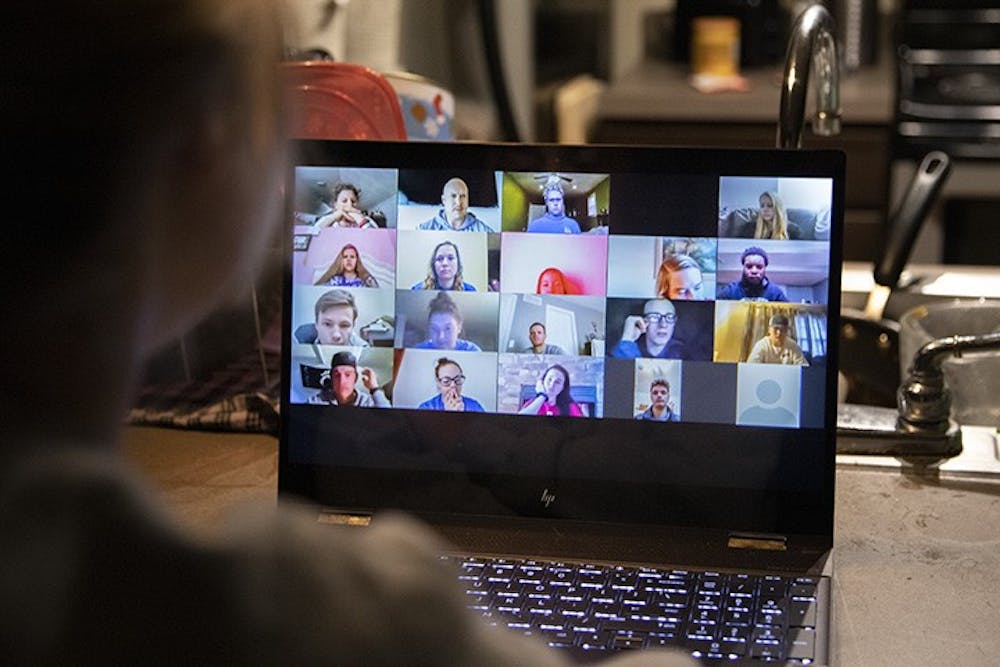Addressing the way we relate to each other and acknowledging the physical distance that followed the start of the pandemic are mental exercises we have done for months now. Our new daily routine also comes with new challenges related to how and what we focus our attention on in class, and the way we perceive reality now that technology is constantly in front of us.
In Stanford University's recent study about the four causes of Zoom fatigue, researchers found that Zoom exhaustion comes primarily because of excessive and intense eye contact, constantly watching ourselves on video, limited mobility and more energy spent identifying social cues we could identify intuitively during in-person interactions.
“In the real world, if somebody was following you around with a mirror constantly — so that while you were talking to people, making decisions, giving feedback, getting feedback — you were seeing yourself in a mirror, that would just be crazy,” Jeremy Bailenson, director of the Stanford Virtual Human Interaction Lab, said.
The excess amount of stimuli we process while looking at our screens has been quickly normalized, given there was an urgent need for adaptation when the pandemic hit. We had to rapidly internalize being aware of muting ourselves, choosing the right angle for our computer, setting the ideal light depending on the time of the meeting and sharing a screen without forgetting to close our 27 open tabs.
It is common to discuss what distracts us in our own environments while we are on video calls, as the fear that our classmates will find out we are wearing pajamas from the waist down is real. However, sometimes the distractions come from one call, simultaneously — people’s backgrounds that range from a fun space scenario to a beautiful backyard, or disabled cameras that create concerns for the safety of our classmates.
Video calls are a new way to make unconscious comparisons, such as the ones we were already making on Instagram or with Snapchat filters. Our brain might play tricks on us by distorting our reality on video calls and make us, for instance, picture the rest of the house of our classmates just by looking at their backgrounds.
There is nothing wrong with imagining different realities, but if it becomes a negative comparison with our own life, our mental health might be in danger.
The insecurities are not only about the interruptions we encounter in our video calls. Self-consciousness and lower self-esteem have also increased in the pandemic, under a phenomenon called Zoom dysmorphia.
What we see in the camera is often a distorted version of ourselves. Before the social media era, these distorted realities were not a big deal, as being in front of a camera was not the standard. Today, video calls are the rule.
As students, we are constantly exposed to the technology of cameras, and even if we turn them off, we might still experience the anxiety that comes with the need to be prepared for class in case the professor decides to put us in the spotlight.
Our brain is constantly bombarded with stimuli. During video calls, distractions such as light from our screens, unmuted classmates that forget to check their speakers, sounds from our own houses, different and creative backgrounds and voices of the participants of the meeting are just a few of the disturbances we might face while we are in virtual meetings.
Our decisions are all about what we pay attention to, so if we are not conscious of the stimuli around us, our learning and concentration can definitely get off-track.
We must create a space to discuss and address the distractions we experience on video calls that might damage our self-esteem and diminish our learning. Starting more regular conversations and finding solutions about how to cope with these situations is crucial to take care of our mental health.

